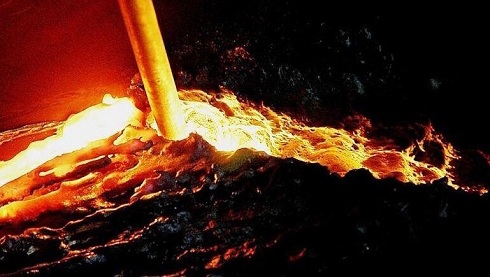SunSirs: Lead Fell 2.72% after Shocks in October 2019
November 06 2019 14:00:00 SunSirs (Linda)
1. Prices Trend
In October 2019, the domestic 1# lead ingot market fell after shocks. The average price was 16,993.75RMB/t at the beginning of October and 16,531.25RMB/t at the end of this month, 2.72% lower.
On Oct 31, the Lead Commodity Index was 100.61, 0.91 lower than that of yesterday, 24.92% lower than the peak of 134.01 in the cycle (Nov 29, 2016), and 34.81% higher than the lowest point of 74.63 (Mar 19, 2015). (Cycle: Sep 1, 2011 to date)
2. Market Analysis
Domestic market: In October 2019, the overall trend of PBD was like a "V", with a wide range of shocks between 2,080-2,162USD. In the early stage, PBD rebounded form low and continued to soar, mainly due to the preference of macro news at the beginning of this month, signs of negotiations in Sino US trade negotiations, and the continuous decline of the US dollar boosted the metal trend. PBD surged continuely, it once rose high to 2,262USD, a new high since July 2018. Later, it fell from high because of the higher upward pressure. As for the spot market, the prices went lower this month. At the end of October, the main transaction range was 16,500-16,700RMB/t, about 600RMB/t lower. The market was cold, most of which were long-term orders with limited bulk ones. In October, the environmental protection in North China was upgraded, some manufacturers reduced production, and the battery was in traditional off-season. The manufacturers turned to recycled lead, there were limited transactions.
Industry: Before and after the Federal Reserve's interest rate meeting, the US dollar index continued to decline. A series of domestic and foreign economic data were weak after the interest rate cut as scheduled, which led to concerns about the continued weakness of the future macro-economy. After this week, the US Congress officially launched the impeachment procedure for Trump, and the base metal showed a trend of ‘first raise then fall’.
Supply and demand: according to the data released by the world Bureau of Metal Statistics (WBMs) on October 16, the supply gap in the global lead market from January to August 2019 was 241,000 tons, and the gap in 2018 was 236,000 tons. As the end of August, the total inventory decreased by 9,000 tons compared with the end of 2018. Unreported inventory changes are not included in consumption statistics. From January to August 2019, the global refined lead production (primary and secondary) was 8.297 million tons, an increase of 10.2% over the same period last year. China's apparent demand is estimated to be 4.061 million tons, an increase of 851,000 tons on a year-on-year basis, accounting for about 48% of the global total. From January to August 2019, the apparent demand of the United States decreased by 14,000 tons year on year. In August 2019, the refined lead production is 1,046,700 tons, and the consumption is 1,079,300 tons.
3. Prospects for the Future Market
Next week's economic data is still concentrated. In addition to the employment data, there are PMI data from various countries. It's hard to be optimistic about the expected value, and there's no room for a sharp rise for the low dollar index recovery. However, the worry about economic fatigue still makes the bullies of various metals afraid. If the market shows a correction, it may increase the willingness of downstream consumers to buy. In November, the atmosphere will be much better.
If you have any questions, please feel free to contact SunSirs with support@sunsirs.com.
- 2024-02-07 SunSirs: Approaching Holidays, Lead Prices Were Weak (January 29-February 5)
- 2024-01-30 SunSirs: As the Holiday Approaching, Lead Prices Fluctuated Narrowly (January 19-26)
- 2024-01-24 SunSirs: Supply Was Tight, Leading to a Slight Increase in Lead Prices (January 15-22)
- 2023-12-05 SunSirs: Downstream Was in the Off-Season, and Lead Prices Declined (November 27-December 4)
- 2023-11-16 SunSirs: Price Increase in Domestic Spot Lead Market



